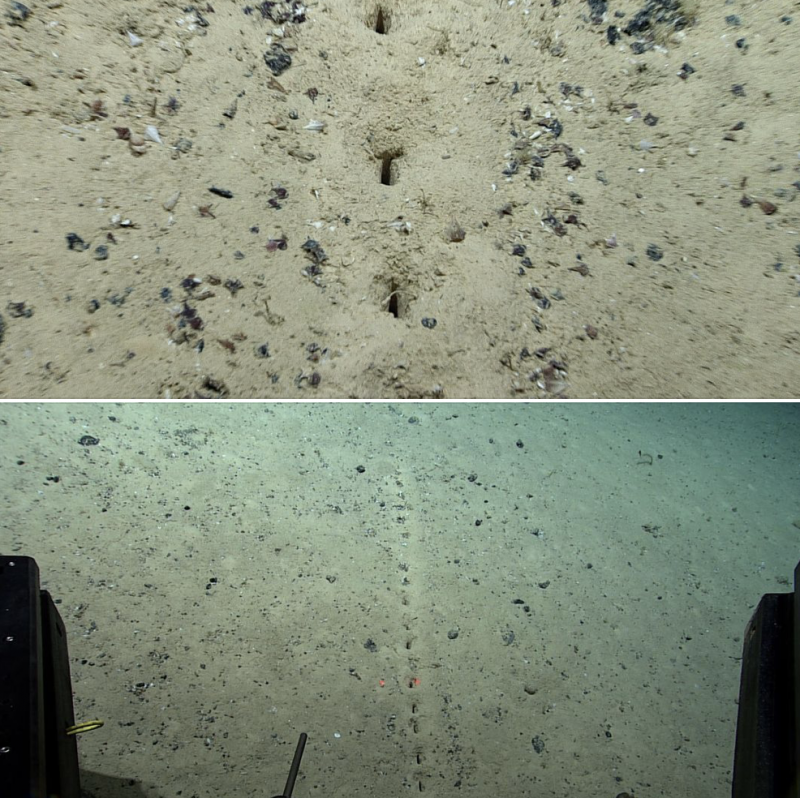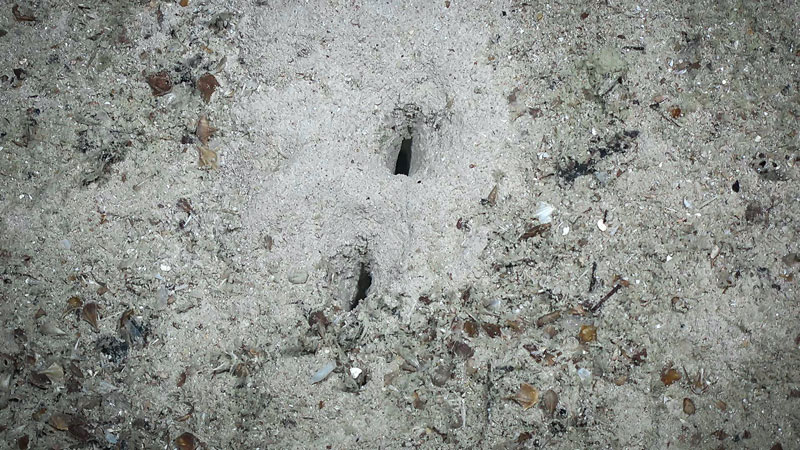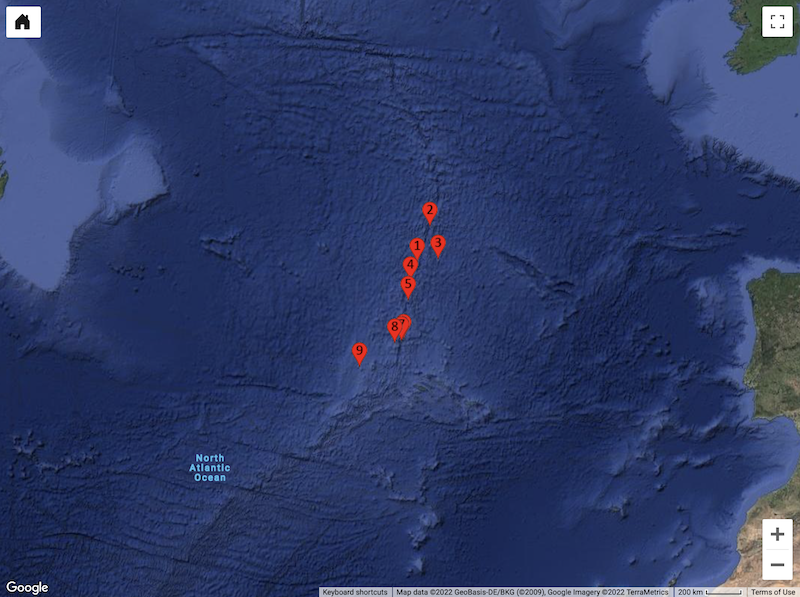
What made these strange holes on the seafloor in the Atlantic Ocean? That’s what scientists are trying to figure out, after a remotely operated camera noticed the oddities on July 23, 2022. The scientists, with NOAA Ocean Exploration’s Voyage to the Ridge 2022 expedition spotted the holes. They noticed them while studying an undersea volcano along the Mid-Atlantic Ridge, north of the Azores. The holes are about 2,540 meters (1.6 miles) below the sea surface. They form nearly straight lines and look organized.
NOAA posted the news about the holes on their website on July 27, 2022. The Miami Herald also reported on the strange finding (with the article last updated on July 28).
Weird holes ‘look almost human made’
As NOAA noted on their website:
During Dive 04 of the second Voyage to the Ridge 2022 expedition, we observed several sublinear sets of holes in the sediment on the seafloor at a depth of approximately 2,540 meters (1.6 miles). While the holes look almost human made, the little piles of sediment around them suggest they had been excavated. We attempted but were not able to take a peek into the holes and poke them with the tools on the remotely operated vehicle. It was also not apparent as to whether the holes were connected beneath the sediment surface.
In addition, NOAA Ocean Exploration also posted the news on Facebook on July 25, saying:
Overall, the scientists found several sets of the odd holes in the sediment on the seafloor. NOAA stated:
We observed several of these sublinear sets of holes in the sediment. These holes have been previously reported from the region, but their origin remains a mystery.
While they look almost human made, the little piles of sediment around the holes make them seem like they were excavated by … something.
With this in mind, NOAA also said that they weren’t able to confirm
… whether the holes were connected beneath the sediment surface.

Deep down in the ocean
More specifically, the sets of holes are located on a flat sandy surface about 1.6 miles down (2.6 km or 2,540 meters). The scientists used a remote camera to photograph the holes and other geological features and marine life. The dive itself, on July 23, reached a depth of 1.7 miles (2.7 km or 2,700 meters) and primarily investigated the underwater volcano. The mystery holes were a fascinating and unexpected surprise.
Possible explanations for weird holes
The big question, of course, is who or what made these holes. The Miami Herald story noted that scientists
… hypothesize that the holes are likely biological in origin.
This includes the possibility of being made by the
… feeding appendage of a large animal.
Interested readers suggested ideas such as an unknown crabs species, water from underground springs, methane gas or as usual, aliens.
The Voyage to the Ridge 2022 expedition is exploring poorly understood deepwater areas of the Charlie-Gibbs Fracture Zone, the Mid-Atlantic Ridge and Azores Plateau. According to NOAA:
The majority of it sits underwater and thus much of it remains largely unexplored. With active tectonic spreading, the MAR is the site of frequent earthquakes. Hydrothermal vents may form where magma provides heat as it rises to the seafloor. These vents are known to support diverse chemosynthetic communities. However, little is known about life at these sites once vents go extinct, or what life lies beyond the vents, further away from the rift zone.

Not the 1st time
Although the discovery of these particular holes is new, similar ones have been seen before. Scientists found the previous ones in July 2004, while exploring the Mid-Atlantic Ridge at a depth of 2,082 meters (6,831 feet). Scientists published a peer-reviewed paper earlier this year on January 31 about them in Frontiers in Marine Science.
As the paper described them:
On 13 July 2004, during an expedition exploring biodiversity along the northern Mid-Atlantic Ridge, a ROV dive recorded videos of numerous sublinear sets of holes in sediment at ca. 2,082 m depth. The location was north of the Azores. Each set appeared track-like. Lengths of individual series ranged from < 1 m to many meters. Each was straight or gently curved. Some series intersected or crossed. Close examination of the holes showed them to be elongate, with the long axis parallel to the axis of the series. The holes were ca. 6 × 1.5 cm, with distance between holes similar to hole length. The holes that appeared to be most recently formed were each surrounded by raised sediment. Holes that appeared older were partly filled with sediment and the raised surrounding sediment was less obvious.
You can view many more great images from the Voyage to the Ridge 2022 expedition in their gallery.
While you’re here, also take a look at this cool Google Earth ocean maps deep dive.
Bottom line: Scientists with NOAA Ocean Exploration say they discovered weird holes on the ocean floor on July 23 2022, while exploring an underwater volcano. The holes are located north of the Azores in the Atlantic ocean, 1.6 miles (2,540 meters) below the surface. What made them?











